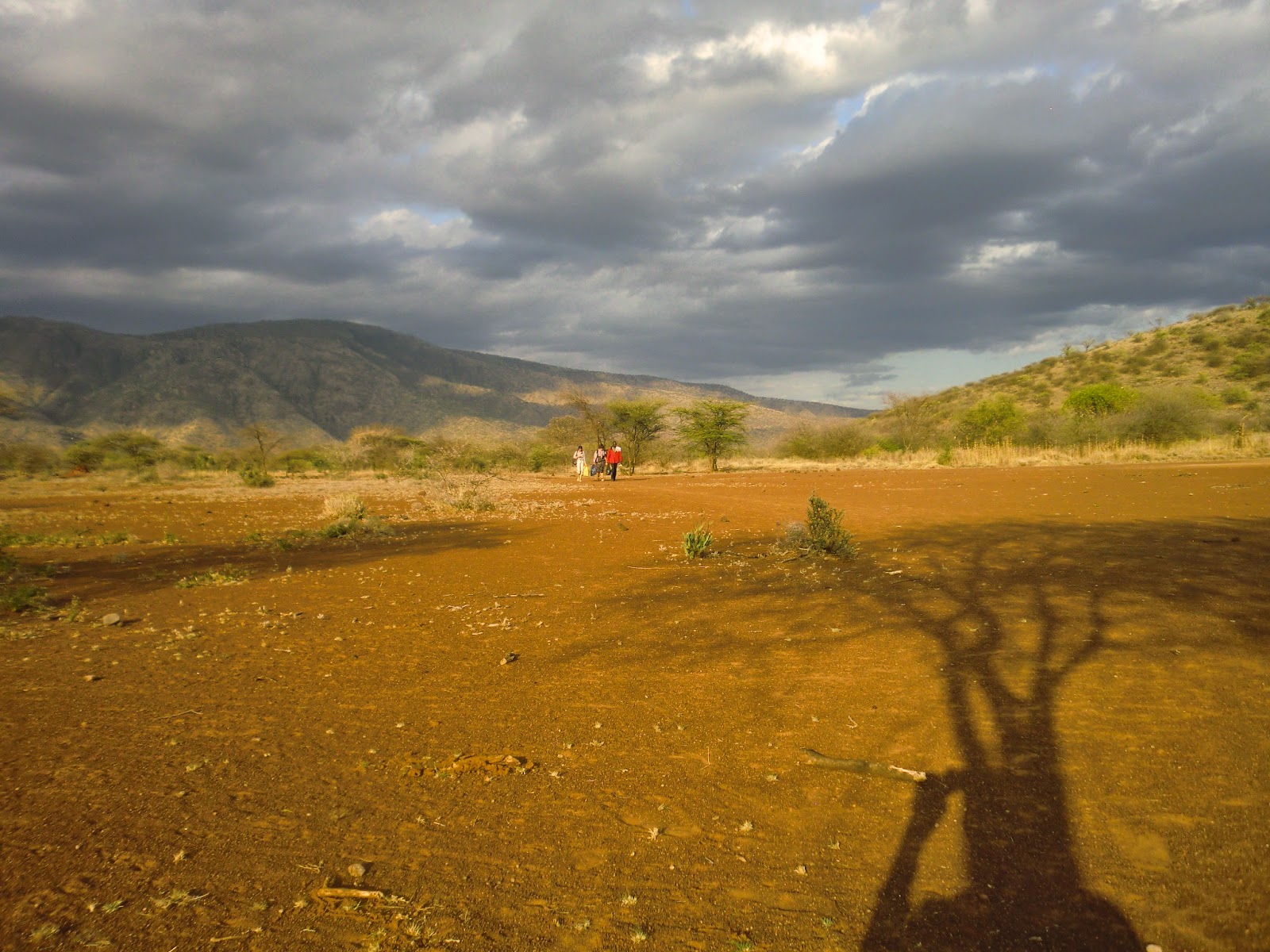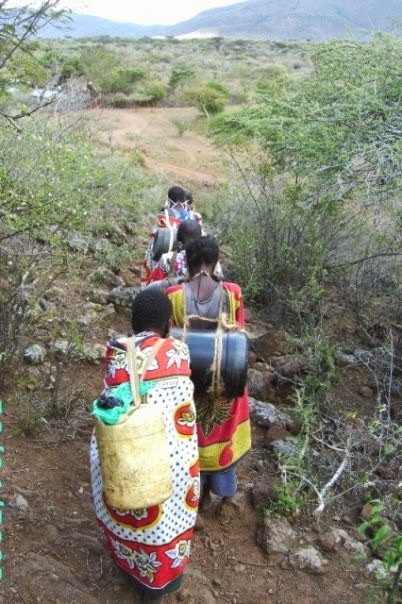Maape Esafari! Magadi
Lets go on a journey
While I was staying with the Sakuda family, Jonathan took me
and the other volunteers who were there during my stay to several villages to
meet other Maasai family and friends.
The first was Magadi.
Jonathan, Bertille, Peter, William and
I woke up early in the morning and made it to the Ilnarooj town center where we took a
packed truck to Ksidean a neighboring town with an actual city center. When I say packed, I mean there were four people in
the front seats, and about ten of us in the back, plus three goats, two
chickens and piles and piles of firewood.
 |
| Jonathan and Peter in the truck before the crowd came |
Once in Ksidean, we got spots in a caravan
that took us the remaining three hours to Magadi. At that point, I thought we were
there. The caravan stopped in front of a roadside village with several huts
lined in a row along the “highway” (two lane paved road).
 |
| Right off the bus |
But not yet. We still
had a bit of a hike. Up hills, down hills, across planes, up hills again.
Across another flat surface of land that looked like “The Lion King” terrain.
Then finally, in the distance we came upon a group of four huts surrounded by a
stick fence. This is where the MBori family lives. We had arrived.
If Jonathan’s village sometimes felt isolated, the Mbori family's village took that to a whole different level. They live here, so far away from any
other family or village, and yet they are all still connected. They interact
with neighbors when taking care of the cattle and goats, even if the neighbors
live miles and miles away from them; the people who live in the town know them;
there is definitely a sense of community within the remoteness. |
| View of Magadi from above |
The first night we slept outside on a cow skin rug and under
a mosquito net that Mamma Mbori and her daughters set up for us. If I learned
anything from sleeping outside right next to the animal pens it's that goats make
the most absurd and ridiculous, funny noises. I can’t describe them. Somewhere
between baa-ing, eeeh-ing and making gurgling sounds that made me feel I was
sleeping next to creatures from a “Star Wars” movie. Do goats in America do
this, I wonder?
 |
| A group of young kids got into the house. Woops! |
The hospitality of this family is incredible. The second we got there we were served shai. We were always to eat before the family, we were to go to sleep before them and when we woke up, there was breakfast already ready. On our last night they sacrificed a goat for us and when it rained on our outdoor campout they insisted we sleep in their beds inside. I felt like I was abusing their warmth and generosity but I learned that, just like back home in Ilnarooj, guests are the center. It’s just as much a sign of respect for them to give as for us to receive.
 |
| Nini Mbori: My Maasai Mamma |
I became very close to the Mamma of the family after asking her what her name was in Maasai. After hearing the question she laughed and shook her head and I realized that I shouldn't have asked that. No one had told me that it was disrespectful in Maasai culture to ask an elder their name. Luckily, she saw it as endearing and for the remainder of my stay she was constantly teaching the Maasai language, how to milk, how to cook. I became very fond of her.
One of the Mbori family's daughters, Janet, is currently one of the girls that Jonathan's organisation, MAYOO (The Maasai Youth Outreach Organization) sponsors at the local Safe House for Girls. At the age of twelve, an older Maasai man approached the family with intentions of marrying her. In Maasai culture, if a girl is not enrolled in school or is not already engaged she is eligible to be married, regardless of what the family or girl think, especially if there is an adequate dowry involved (usually involving several goats, cows, chickens and even blankets). Before Janet could get married, Jonathan and William brought a group of Australian volunteers to visit the family, much like us, and, seeing Janet's distress towards the thought of being married (with reason I think) found a sponsor in Australia to help send her to the Safe House. In USA finances, to send a girl to the Safe House, where she gets full room and board and a full education at a private school, it's $35 a month. When I learnt that, I couldn't believe it. That's as much, if not more than so many people I know, myself included, spend in a nigh on dinner in NYC.
When I returned home, I got my family to sponsor Janet's sister to go to the Safe House. At the time that Janet was getting engaged, her sister Jaqueline was in school. For many Maasai families, whether you go to school or not is luck of the draw, especially when there are many kids and there is also the need to tend the livestock and do chores around the house. By sponsoring the second twin, we're ensuring that she won't only get a better education where she is, but also that she won't get pulled out of school at any moments notice. I also wanted to give her the chance to live with her sister again, since the two of them are very close.
If anyone reading this has any interest in learning more about the Safe House or how to help sponsor girls in the Maasai community, please leave a comment or send me a message. I'll be doing another blog post coming up with more info on it, so this is just a prelude, but feel free to reach out!


















































